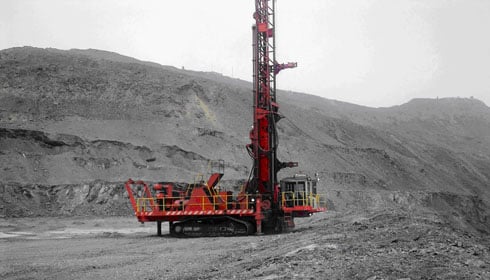Sandvik and Flanders - a “best in class” partnership
Sandvik Mining and Construction and Flanders have entered a formal partnership to automate surface mining drill rigs and provide autonomous operation. With this new partnership, the two suppliers will collaborate closely to offer customers the most effective and efficient drilling systems in the industry.

The agreement between Sandvik and Flanders ensures that drillers get the world's best combination of technologies for state-of-the-art automation or machine autonomy. The Flanders ARDVARC systems have been field-proven on multiple blasthole drills around the world. For factory-supplied systems on new Sandvik drills, the initial automation modules will be offered starting in Quarter 1 of 2012 on machines with electric-over-hydraulic controls.
"Together, we will deliver automated and autonomous machines directly from the factory, and offer sophisticated retrofits for more than 2000 Sandvik drill rigs currently operating globally," says Gregg Scanlan, VP of Surface Drilling Equipment at Sandvik. "Our strategy is to combine proven automation with world-class drill rigs and a strong global aftermarket support."
Allen Patterson, Chief Operating Officer at Flanders explains: "By listening to customers and serving their needs our mining solutions deliver real operational, safety and financial value for our customers. Our ARDVARC automated drill system continues to prove that. Working with Sandvik helps us in our mission of being a force for good to our customers, business partners like Sandvik and the communities we serve. Together we can better standardize the offering and formalize field support on a global scale. Our partnership will accelerate implementation and acceptance of 'automation' on drill rigs and benefit a growing number of mining companies."
'Drill rig automation' is a broad concept. It progresses from automation of certain functions and remote control up to completely autonomous operation (without direct human interaction). Often the target is to have a single operator supervising multiple drills from a remote office. The driving factors for considering automated or autonomous operation vary from mine to mine, but are typically a combination of the following:
- Safety
By physically removing the driller from the machine, particularly when drilling near the toe or the crest, risks are reduced or even eliminated depending on the level of remote control. - Utilization
Blasthole drills commonly only drill 40-60% of the shift time. Utilization increases incrementally with the level of technology, e.g., one-rod automation, one-hole automation, or complete blasthole pattern autonomy. The greatest contribution of complete rig automation is increased utilization of the equipment by enabling mine operators to drill through blast outages, shift changes and operator breaks. - Training and recruitment
If finding skilled drillers or training them is a challenge, automated rig functions can compensate for limited skills. If there is a shortage of operators in general, remote control or autonomy can help resolve the problem. Also, the built-in intelligence in the drill controls protects against inappropriate operations and helps all drillers perform at a more uniform level. - Reliability and maintenance planning
Health monitoring systems provide real-time information on the operating parameters of the drill. This information can be used to detect harmful conditions (preventing damage), schedule on-demand maintenance (reducing maintenance cost), improve preventative maintenance (improve availability), or a combination of these factors. - Productivity
Automated, or drilling assist, functions increase the average production rate among all drillers. Combined with increased reliability and utilization, the total net productivity can increase dramatically. - Reporting and management
By displaying drilling information directly in the cab as well as in exported reports, the driller, the operations manager, and the maintenance manager can better address real or potential problems. - Total drilling cost
The net effect of increased productivity, better capital utilization, and lower labor costs is to dramatically reduce total drilling cost. One particularly easy saving to measure is the reduced fuel cost thanks to the Compressor Management System. - depth control allows for more level benches.
- Fragmentation
Combining improved hole straightness and location with integrated strata recognition gives the opportunity to load each hole for optimized blasting and fragmentation. This may shorten the shovel loading cycle, but primarily improves the throughput in the crushing plant or the materials handling systems.
For further information, please contact:
Satu Rämö
Global Marketing Communication Manager
Sandvik Construction
Office Phone: +358 205 44 151
Mobile Phone: +358 40 537 4020
E-mail: satu.ramo@sandvik.com
Allen Patterson
Flanders
Chief Operating Officer
Tel. +1 812-867-7421
E-mail: apatterson@flanderselectric.com